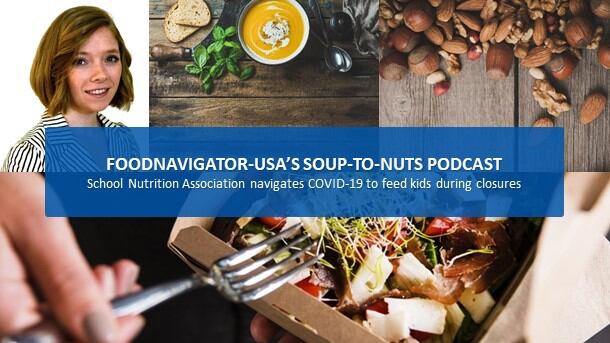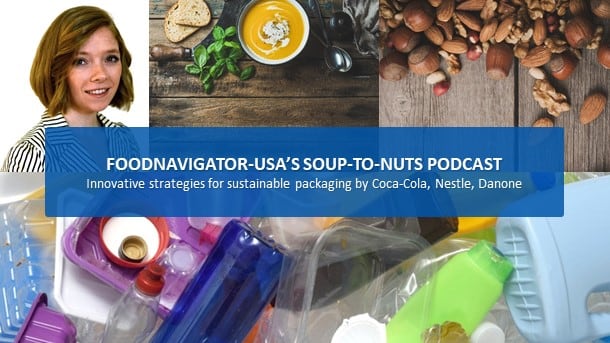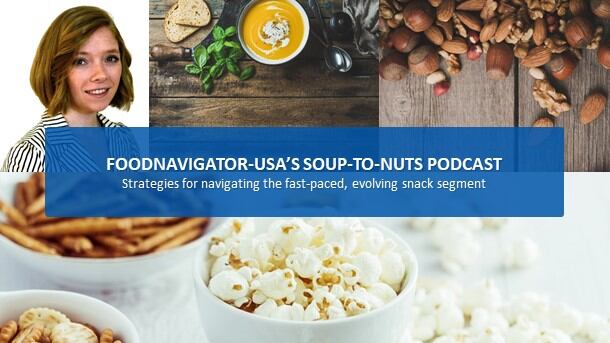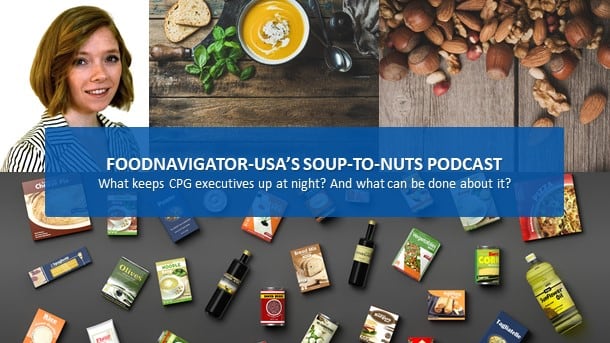As part of the School Nutrition Association’s 48th annual Legislative Action Conference March 8-10, they also shared strategies for encouraging students to eat more fruits, vegetables and whole grains, heard from legislators about efforts on the hill to reshape the school meal program, and lobbied Congress to increase student access to healthy school meals while also easing regulations that they say are overly burdensome and distracting from their primary goal of serving students.
To learn more about the challenges facing school nutrition professionals and how SNA is working with its members and legislative leaders to find solutions, this episode of FoodNavigator-USA’s Soup-to-Nuts Podcast features SNA’s Director of Media Relations Diane Pratt-Heavner. Pratt-Heavner shares SNA’s top priorities for the coming year, as outlined in the trade group’s 2020 Position Paper, as well as that the talking points for members who met with their Congressional representatives on Capitol Hill on Tuesday March 10. Elizabeth Cowles Johnston, who helps manage SNA’s public relations, also chimes in with ideas for how the CPG industry can help school nutritional professionals better feed students.
[Editor's Note: Never miss another episode of FoodNavigator-USA's Soup-To-Nuts Podcast -- subscribe on iTunes.]
Providing meals despite COVID-19 threat
A top priority of the nearly 1,000 school nutrition professionals gathered at the Legislative Action Conference was how to ensure that children who rely on schools for breakfast and lunch continue to have access to those meals even if their schools close in response to the ongoing COVID-19 pandemic.
In a letter SNA sent to the US Department of Agriculture on March 5, the trade group’s president Gay Anderson and CEO Patricia Montague asked the agency to streamline and expand schools’ ability to serve students meals through the Summer Food Service Program during unanticipated school closures. As Pratt-Heavner explains, SNA also asked for wiggle room on requirements that students consume those meals together so as to minimize the risk of disease spread.
“We’ve got 22 million kids every day who receive a free or reduced price meal. … And if there are unanticipated closures, losing access to those meals can have a real impact on the health and wellbeing of those children,” Pratt-Heavner explained. “So, our members are always cognizant of that and they often are working with local food pantries to have shelters and backpack programs and in the summer we see them launching summer meal programs to make sure kids don’t go hungry.”
But, she added, “this is not something we’ve ever encountered before,” and addressing feeding during COVID-19 will require creativity.
In addition to ensuring children have access to food during closures, Pratt-Heavner notes that schools are exploring how to reduce the risk of food waste and lost funds related to emergency closures by exploring ways to work with area food banks to use their fresh food to offer meals to hungry students.
SNA seeks to eliminate reduced price meals
SNA members also want to increase student access to school breakfast and lunch more broadly beyond the current COVID-19 crisis, which is why they are calling on Congress to eliminate the reduced price category for breakfast and lunch.
On the surface, offering families who make less money a discount for breakfast and lunch may sound benevolent, but Pratt-Heavner explains that the cost is often still out of reach for parents – placing them in the awkward position of having to deny a meal to their children.
“We were excited to see several of the democratic candidates for president talking about universal meals, free meals for all students on the campaign trail. So, we are hopeful that we’ll have folks receptive to this,” Pratt-Heavner said.
She added that offering free meals to students who previously qualified for reduced price meals also could help address unpaid meal debt, which has become a hot-button issue in recent years.
SNA asks Congress to expand direct certification with Medicaid
SNA members also asked members of Congress to help increase student access to school meals by expanding direct certification with Medicaid for free and reduced price meals to all states. Diane explains that a pilot program in 19 states showed promising results, and as such SNA wants all schools to have this option.
According to Pratt-Heavner, getting the food to students is only part of the battle – the other is giving them enough time to eat it. She explained that short lunch periods mean many children do not have enough “seat time” to actually eat their food, which leads to increased food waste and less nutrition actually going into kids.
With this in mind, she said, SNA members asked USDA and the US Department of Education to work with the School Food Authorities to develop guidance on ensuring students have adequate time to eat breakfast and lunch.
SNA wants increased regulatory flexibility
SNA members also asked their legislators to ease the administrative burden of feeding students by preserving a controversial final rule published in late 2018 that, depending on who you talk to, either rolled-back or “paused” for flexibility some of the nutrition standards set in the Healthy, Hunger-Free Kids Act.
Pratt-Heavner explained that SNA sees the Child Nutrition Programs: Flexibilities for Milk, Whole Grains and Sodium Requirements final rule as offering schools options for providing nutritious food that children will eat. But, perhaps more important to SNA members, were provisions that would simplify monitoring requirements.
SNA members also asked Congress to strengthen the school meal program by increasing USDA food commodities support for the School Breakfast Program to allow more students to benefit from breakfast and “help schools cover rising costs and advance USDA’s mission of supporting America’s farmers.”
Fueling students’ bodies and imaginations
While connecting with legislators was a primary focus of the conference, the program also allowed attendees to share best practices for boosting student participation in school meal programs at a culinary creation session.
Pratt-Heavner said that ideas ranged from blanching broccoli to make it a vivid and appealing green, to creating fresh food bars similar to those students see at fast casual restaurants, such as Chipotle, where they can customize their meals.
Other ideas included “theme days,” such as Fear Factor Friday, when students are challenged to try an unfamiliar fruit or vegetable.
A helping hand from industry
While school meals have come a long way in terms of nutrition standards and creativity, school nutritional professionals say more can be done – but to do it they could use help from the food industry.
Johnston explained that during one conference session several attendees shared wishes for how industry could help them do their jobs better.
For example, she said, they asked for help making meals more desirable through creative packaging that is either fun or better replicates what students see at fast casual restaurants. Also, she said, several attendees asked for marketing materials to explain what foods are and make them more appealing. They also expressed a need for new equipment to not only prepare foods, but also to deliver the foods efficiently to students. This would include items like kiosks or grab-and-go coolers.
Some industry players already are stepping up to make these wishes come true. For example, earlier this month, the PepsiCo Foundation and youth wellness nonprofit GENYOUth funded and distributed 45 “grab-and-go” breakfast carts for schools across the country that would be used to serve 4.5 million breakfasts to 25,000 students.
While SNA members are extremely grateful for these generation donations, Johnston said they could still use additional, similar help from other industry players.




